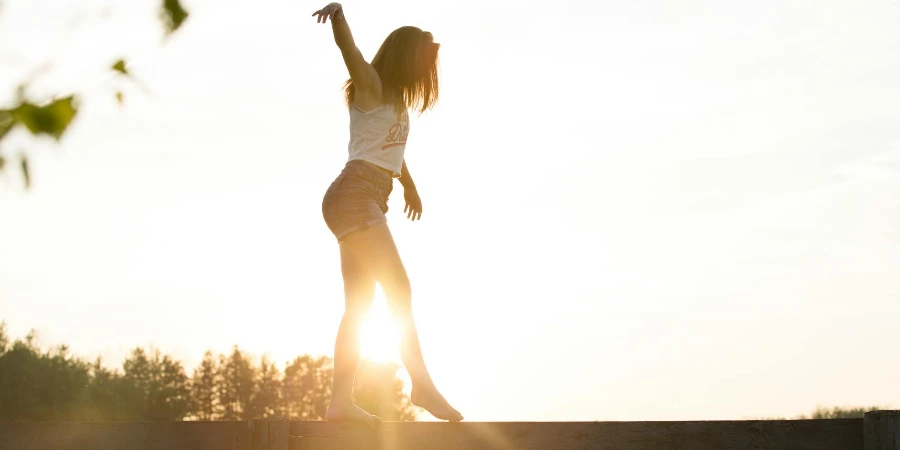Physical and mental health are important parts of our lives, and that’s why Pilates and yoga are so much in high demand. Both have their unique philosophies, techniques and benefits, which make them rather opposite in terms of choosing between them. This essay goes into details of the inner world of pilates and yoga, comparing how popular they are, how effective they are, and how to incorporate them in our lifestyle.
Table of Contents:
1. What is Pilates vs yoga?
2. The popularity of Pilates and yoga
3. Is Pilates or yoga better for you?
4. How to choose between Pilates and yoga
5. How to use Pilates and yoga effectively
What is Pilates vs yoga?

Pilates is a physical fitness system created by the German-born Joseph Pilates in the early 20th century that builds on the principle of integration of mind and body, relying on core strength, flexibility, and (mostly) precise motion to build alignment, coordination and control of the body, in conjunction with breathing. Pilates is practised on a mat or with unique equipment, including a reformer, which adds resistance to Pilates exercises.
Originating in ancient India, yoga is an integrated practice of postures (asanas), breathing exercises (pranayama), meditation and ethical precepts. The goal is to attain body-mind-soul unity, increasing physical flexibility, mental focus and spiritual calm. Styles of yoga include the strenuous Ashtanga, the gentle Hatha and everything in between.
The popularity of Pilates and yoga

Pilates and yoga both went through a period of exponential growth in the latter part of the 20th century, partly because of their holistic approach to health and fitness. Today, Pilates is a standard offering in many gyms and studios. Its ability to rehabilitate, prevent injuries and enhance athletic performance makes it a popular choice for athletes, dancers and the fitness-minded.
Yoga, by contrast, has left its cultural moorings entirely to spread across the globe. While it remains a contested space, the popular understanding of it is that it’s a benign practice promoting wellbeing, reducing stress, increasing mobility and strengthening community ties. Its connection to the esoteric traditions of Hinduism, to the belief in a deity observing austerities, to the animal sacrifice conducted on street corners is simply an interesting back-story. It may appeal to the secular community, and to the spiritual seekers, and to everyone in between.
Is Pilates or yoga better for you?

So, which is better, or most appropriate for certain body types and abilities? That depends on your goals and preferences. Both Pilates and yoga offer benefits, so you should try them both – with the same caution you would exercise in trying any new physical activity. If you are looking for core strength, improved posture and enhanced athletic performance, Pilates is a sure bet. If you would rather work on balance, flexibility and spirituality, yoga is the better option.
Known for its flexibility, balance, and mental health benefits, as well as being a less dangerous way for stressed-out white-collar workers to burn off some energy than a full-contact sparring match, yoga offers numerous forms of practice suitable for people of all ages and stages of fitness.
How to choose between Pilates and yoga

When deciding whether to practise Pilates or yoga, it’s important to take into account your fitness, physical condition and interests. If you want to improve your core strength, and potentially recover from an injury, then Pilates might be the better choice. It has a targeted approach to addressing specific areas of the body, and it offers a sense of how things are going – you can measure your progress.
If you’re intrigued by a system that’s holistic, that feeds the body, mind and spirit, then yoga is probably the better choice. It’s highly adaptable – there are countless different styles – and it’s very well-rounded. There’s no point in comparing Pilates with yoga: if you’re curious, try out both. There are plenty of Pilates studios and yoga classes to go around.
How to use Pilates and yoga effectively

The secret to getting the most out of the benefits of Pilates and yoga is consistency and correct technique. Start with beginner classes or private lessons to make sure you are doing your Pilates or yoga postures or exercises correctly and in a safe way. Scheduling Pilates or yoga into your routine 2-3 times a week can result in improved strength, flexibility and mental focus.
Both practices involve the same humble yet challenging mantra: listen to your body and respect its edges. As you gradually increase the intensity and complexity of exercises or poses, you’re less likely to get injured and to achieve steady progress over the long term. And, as with Pilates exercises, there’s always the possibility of switching up your yoga practice with other apparatuses or styles in order to keep things fresh and to better accommodate evolving needs and preferences.
Conclusion:
The way to get there might be different – Pilates and yoga possess their own unique techniques, benefits and philosophies – but both forms can enhance your wellbeing in ways that are equally profound. Whether you have an interest in the ab-toning, core-strengthening exercises of Pilates or the more all-encompassing approach of yoga, experimentation with both can help you to explore the best and most meaningful way to add Pilates or yoga to your personal wellbeing regimen.




